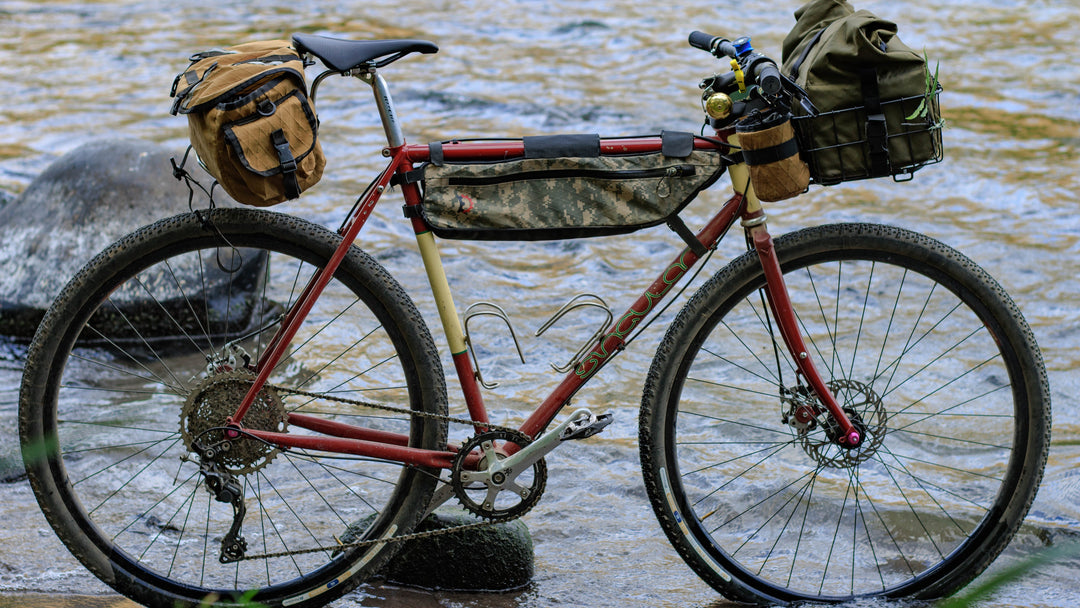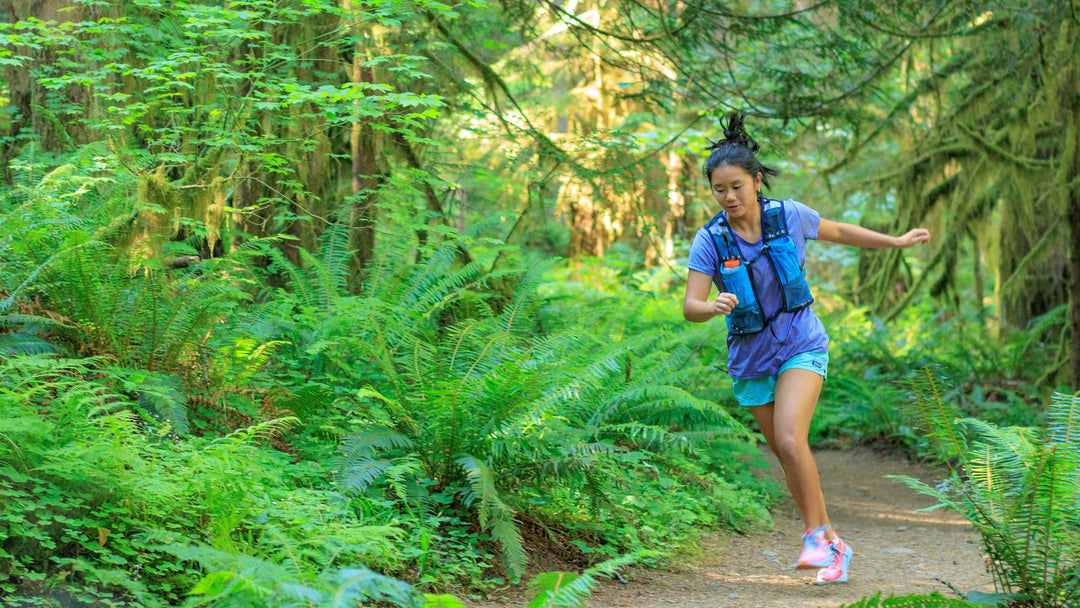Bikepacking the North-South Trail

Written by Greg Hardy, owner of Rockgeist, manufacturer of custom bikepacking gear in Asheville, North Carolina.
It's dark and cold. My torch is mounted to my helmet, looking where I look. Twenty-five yards away, I catch the reflection of two large emerald eyes watching me. I’m trying to make out how big the animal is. I’m wearing one shoe, caught in the middle of putting on my calf sleeves. After three minutes of staring at each other, not breaking eye contact, I look away to get my other sleeve and shoe on. When finished, I look up and the animal is still there. I quickly mount my bike, glance over my shoulder and the eyes are gone. One hundred yards later, there is a coyote standing in the middle of the trail. I receive a disinterested look and the coyote trots off. Its eyes reflected yellow and were not the patient, emerald eyes from a few minutes earlier.

Owls hoot and coyotes yell in the not so-far distance. Field mice run out in front of my tire. I’m bikepacking the North-South Trail in Rhode Island and it’s about three hours after sunset. For the smallest US state, with over one million people living here, the trail does a remarkable job of keeping me in the woods, even though I’m never too far from someone’s backyard. Snaking its way south from the border of Massachusetts, the trails uses state forests, wildlife refuges, management areas and state parks to reach the Atlantic Ocean. This is a well known trail in the local hiking community that takes about 4-5 days to hike the 78 miles. Mountain bikers can do it in one day. Bikepackers most often enjoy a single night on trail, making it a perfect sub-24 hour overnighter.
For such a short ride the terrain is a mixed bag; single-track, country roads, gravel, double-track, and at least two boulder fields serving to remind me this is a hiking trail first. There are lots of down trees and dead sticks finding ways to insert themselves in my wheels and rear triangle. There are a few good sections of hike-a-bike, but the trail is mostly flat making the hiking almost enjoyable. It doesn’t disrupt my rhythm. Off the bike, on the bike. Lift, drag, pull. It’s become so normal for me that my mind stays on its meditative plane that I enjoy so much while bikepacking.

Rounding the last small climb before dropping down to the ocean, I stop at the trail registry. Its a small wooden box containing a notebook in a zip-lock bag. The pages contain short messages from day hikers, thru-hikers, and locals with their dogs. One entry was a quick hello from a man visiting the trail for the first time since he thru-hiked it decades ago. Day hikers write about the falling leaves, the smell of autumn, and the peace they are enjoying. Other hikers describe the deer, bobcats, or osprey they’ve seen. It’s clear this trail means a lot to these hikers. Sharing the same feelings, I write a short note of gratitude before I roll away.

This ride happened on the other side of daylight savings time where the day is short. By 5:30 pm it was dark and the temperature was dropping to 30ºF. There's satisfaction riding in cold weather when you have the gear. But if I count all the times I’ve been up against weather while riding, the weather usually wins. I have limited carrying capacity and it forces me to pack only what’s needed. And I don’t always get it right.
Bikepacking is a game for the minimalist. While the hiker may focus on ultralight weight, the bikepacker focuses on ultralow volume. A lot of my lightweight hiking gear gets used simply because it packs so small and is easy to stash on the bike. Many gear choices change with the expected weather but this is most true for my sleep set up. In cold weather, like for this ride, I use my 1-man tent, air mattress, and 20ºF quilt. But other gear, like my Vecto bladder, gets the nod regardless of the weather.

I like carrying the Vecto because of how well it conforms to the available shape inside my framebag. Squished and squeezed between loose apples, inner tubes, and dehydrated meals, the Vecto makes closing my framebag zippers a lot easier. In the warmer months I’ll run a hydration hose out the nose of the framebag for easy drinking access. But when its cold I just use it as a reservoir and fill my single bottle throughout the day. There’s certainly lots of bladders to choose from, but I like my Vecto because it can screw directly into my Sawyer filter and the back end opens up completely; making filling from streams a breeze. Opening the back end also helps the bladder completely dry when I get home.
Another piece of hiking gear I always ride with is my Garmin eTrex. While visiting unknown trails, navigation might be the most important thing to get right. Fortunately for the N-S Trail I didn’t have to use it, not even for general navigation. To traverse the state, it’s a fun game of linking together clues of blue blazes; about 3 inches wide by 6 inches long. Slapped on trees, telephone poles, and rocks. A double blaze for turns, often next to a hand written N-S Trail marker giving a directional arrow. While riding, these clues are coming every few minutes making it hard to get lost until I reach the end.
As an Amazon Associate I earn from qualifying purchases.”
Want to read the full trip report? It includes the GPS file with points of interest and trip gallery. Other sub-24 hour routes on the East coast can be found here.










Leave a comment